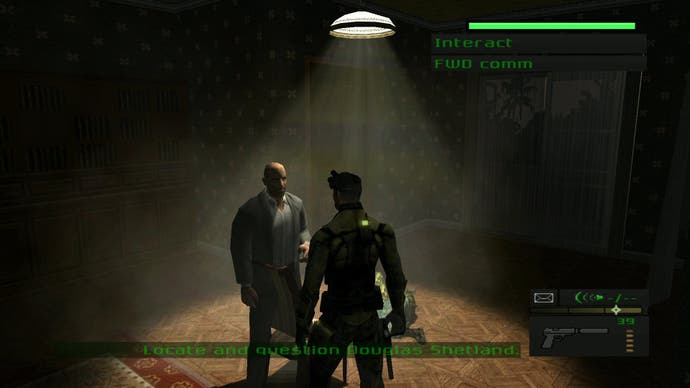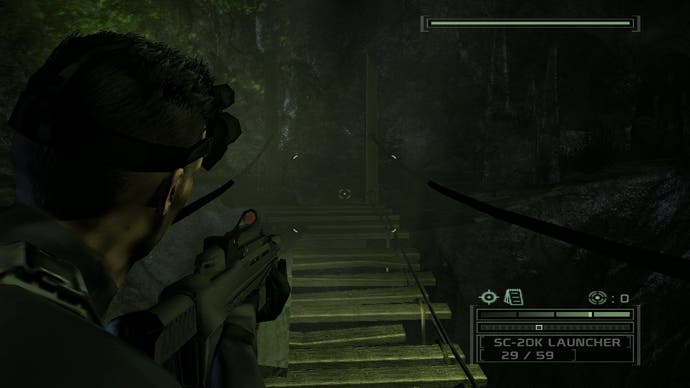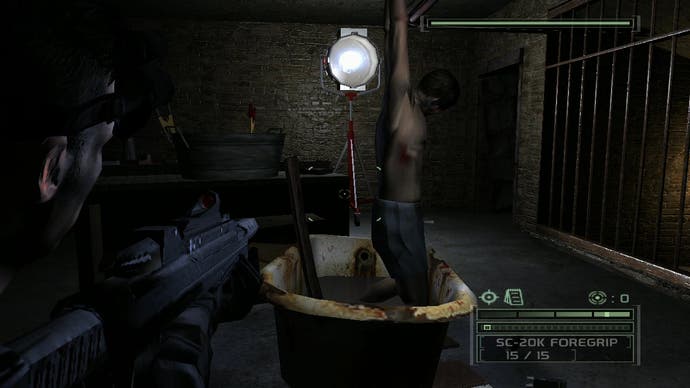Digital Foundry vs. HD Remasters
Splinter Cell and Stranger's Wrath feature in DF's look at the trend for bringing back classics.
Money for old rope? Or newer, better versions of gaming's most celebrated last-gen classics? The process of bringing back vintage noughties console titles and revitalising them with HD visuals now seems to be big business, with a range of classic PS2, Xbox and even Dreamcast releases set for release in the run-up to Christmas.
HD "remastering" kicked off with gusto when Bluepoint Games ported over Sony Santa Monica's brilliant God of War games to the PlayStation 3. While the original releases worked fine on backwards-compatible PS3s, the new remakes were worthwhile in many respects: firstly, resolution was upped to native 720p with anti-aliasing applied, while the inconsistent frame-rate and lack of v-sync on the original games was mostly resolved, resulting in a smoother, more polished experience.
Perhaps most importantly of all, the remastering process demonstrated just how superb Sony Santa Monica's artwork actually was. Liberated from the visual constraints of the PlayStation 2, the sheer detail in the original assets took on a new dimension with the benefit of high-definition resolution.
The success of God of War has prompted a new wave of remakes heading for HD capable consoles. Kratos' PSP outings are getting the high-def treatment for PlayStation 3 (more on that soon) as is Metal Gear Solid: Peace Walker among others. Halo: Combat Evolved is returning alongside Resident Evil, while Beyond Good & Evil is already out, with Prince of Persia and Sly Raccoon trilogies also currently on the shelves.
The question is, are these projects merely an excuse to cash in, bearing in mind the mediocre-to-poor to non-existent backwards compatibility options on the current-generation consoles? Or are they genuine, worthwhile efforts that revitalise old games with the extra rendering power of much more recent hardware? The answer of course depends on the guiding minds behind each individual project, the quality of the original game and the money available for the conversion work.




Stewart Gilray is the bossman at Just Add Water Developments, currently working with Oddworld Inhabitants in bringing Oddworld: Stranger's Wrath to PlayStation 3 in a new, graphically upgraded edition.
"I do have to say I think there are a few HD remakes that should not have been released. It's almost as if they are running the games at HD resolution and that's it - for example, Beyond Good & Evil looks appalling and really doesn't come across very well. It's certainly not as good as I remember it," he says.
"I think HD 'remasters' need to be looked at like classic albums being remastered. You do have to do some extra work on it, it's not just putting it on a new media and sticking it out the door. For example, Rush's Moving Pictures album was remixed into 5.1 for its 30th anniversary re-release. If fans just wanted to play the original games they could get a copy and run it on their old hardware."
Gilray's argument is bolstered by the recent releases of Ubisoft's Splinter Cell games on the PlayStation Network. On paper the games look good: the first two titles in the series support native 1080p rendering, while all three are equipped with stereoscopic 3D support. However, in actuality they are very basic conversions of the PC versions of the original releases, with rudimentary upgrades in terms of the user interfaces - which on the first two games are still running in standard-def, roughly upscaled to HD. Performance is best described as "variable", as this 720p vs. 1080p analysis of the first level of Pandora Tomorrow demonstrates.
Bearing in mind that Ubisoft based its original code on modified versions of Unreal Engine 2, it's rather disappointing to see the first two Splinter Cell games perform in such an average manner when running in 720p on the PlayStation 3, especially as they are essentially identical to the original PC games. Computer hardware equivalent to the PS3's 3.2GHz CPU and 7950GT-alike graphics chip would've been able to blitz the original games but on console we see performance stutter, with a bigger impact on performance to factor in if you play the games in either 1080p or stereoscopic 3D.
So what's gone wrong here? It's really difficult to come to any conclusion other than that these two titles were low-budget ports of the original PC titles with very little love put into them. The online portion of Pandora Tomorrow was arguably the most memorable aspect of the game, so the fact that it has been removed suggests that the will - or perhaps the budget - just wasn't there to make the games the best they could be.
The two titles also illustrate dramatically that if the core assets aren't up to scratch, dropping them into an HD environment isn't going to help matters and actually serves to more effectively highlight their shortcomings. With that in mind, it's perhaps no surprise that the more modern Splinter Cell: Chaos Theory is by far the most effective game in the trilogy, and the only one we would really consider worth the £8 asking price.








